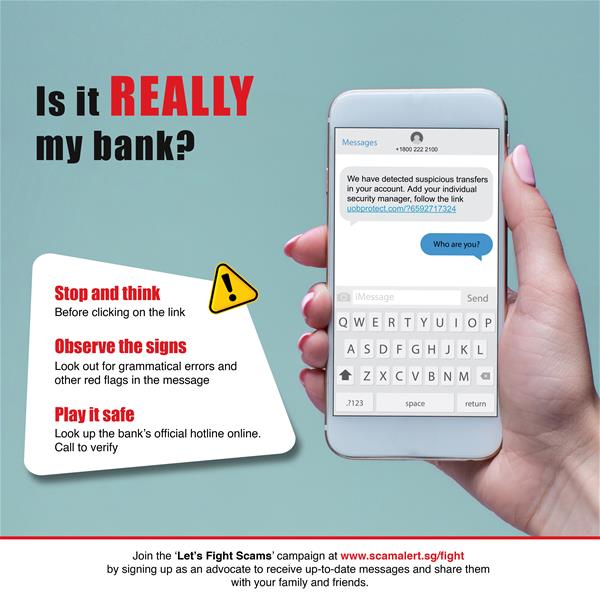Hang up and call the official hotline to verify
ScamAlert Advisor | 08 Apr 2019
.png?Status=Master&sfvrsn=ee835f96_0)
|
If you weren’t already aware, scammers have been using caller ID spoofing and threats as part of their impersonation scams to trick others into believing that they were calling from the official authorities. There are several types of ID spoofing, including email address spoofing. What is Caller ID spoofing? Caller ID reveals the identity of an incoming caller — a friend’s name will appear when they call because you have previously saved their numbers into your mobile device, while a stranger’s mobile will appear as… well, a line of unsaved numbers. However, the spoofing of caller ID allows the scammer to mask their identity by displaying a different number on the victim's Caller ID. A spoofed number can be any random local number or even that of an authority! |
|
 |
|
|
Spoofing is being used in different types of scams such as SMS phishing, impersonation and lucky draw scams tricking victims left and right! If you have received a call, text or email from a familiar/trusted number asking or threatening for private information, requesting you to click on a link, or even to transfer money, it might just be an ID-spoofing scammer on the other end of the line. If so, always remember to keep calm. Do not be rushed into making a decision. Hang up, or read the text carefully. When in doubt, always get in touch with the official authority (via its official hotline) or the sender to check if they have indeed made the call, send the text or email. Taking that few more minutes to carry these checks will probably save you from losing your hard-earned money! |
